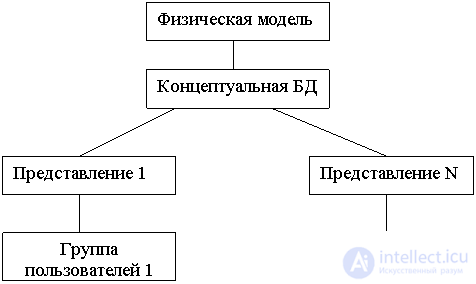Lecture
The main problem: storage, accumulation and search information
The unit of information will be considered data (D).
D. - some fact or a formal description of the phenomena that deserve attention to be considered.
Terminal representation D. - numbers and symbols (bits).
The minimum semantic unit is a data element (ED).
The set of interrelated D - logical record (LZ).
A set of LZ of the same type is a file.
Until the 1970s, there was a close relationship between data and applications.
There was a problem of centralization D. The first databases arose.
A database is a collection of computer-designed data processing that serves to meet the needs of many users within one or more organizations.
The difference between the database and files is that the information is not hidden from the user.
There are two management concepts for D (DD):

A physical database is tied to a specific OS and consists of files, blocks, stacks, clusters, etc. - the level of the system programmer.
A conceptual model is an abstract mapping of a physical model.
The view is an abstract mapping of the conceptual model.
The conceptual model and presentation are the responsibility of the application programmer and administrator.
The conceptual model does not depend on a specific DBMS and OS.
The structure of D at a conceptual level is called a conceptual scheme (COP).

The developed COP should be described at a more abstract level, i.e. should be presented as a model (M).
Comments
To leave a comment
Databases - Data models
Terms: Databases - Data models